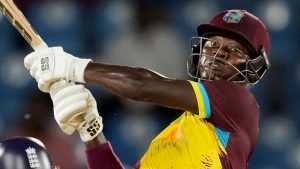MLB odds: Offenses are struggling, here’s how to bet on it


By Edward Egros
FOX Sports MLB Betting Analyst
Class is back in session with the Professor!
We’ve primarily focused on the futures markets in this space, like who will win the World Series and who will win the Rookie of the Year honors. Now, let’s focus on a trend happening in baseball this season that can be capitalized on for individual game bets, specifically totals.
At last check, if you blindly bet the under run total for every game so far, you would be winning at a 53% rate. If you’ve watched enough baseball this season, you may have noticed a considerable drop in overall offense.
Take home runs. Batters are hitting fewer of them through the first two months of the season than in recent memory:
Season Home Runs through May 31st
2022: 1411
2021: 1811
2020*: 2107 (*Pandemic Season, July 23rd through Sept. 22nd were analyzed)
2019: 2280
2018: 1889
This result is surprising because the National League included Designated Hitters this season. However, even if you only look at NL hitters in the nine hole, there are six less home runs this season compared to last.
Although this is the “analytic era,” batters still swing for the fences more than ever. But, if you think strikeout numbers must be skyrocketing, think again:
Season Strikeout Rate
2022: 22.3%
2021: 24.2%
2020*: 23.4%
2019: 22.9%
2018: 22.4%
What’s also strange is other parts of the game have not deteriorated. BABIP, or batting average on balls in play, is barely on the decline:
Season BABIP thru May 31st
2022: .287
2021: .288
2020*: .291
2019: .294
2018: .295
The suppressed offense is almost exclusively because of the lack of the long ball. However, thanks to Statcast, we can further investigate what’s going on. As we’ve discussed, Statcast measures the exit velocity and launch angle of the ball after it makes contact with the bat. Obviously, to have a home run, the ball must be hit with enough power and with just the right trajectory to exit the ballpark. It stands to reason either factor would affect the lack of homers. However, the data does not support this idea:
Season Average Exit Velocity (mph), Average Launch Angle (degrees)
2022: 88.7, 12.6
2021: 88.9, 12.2
2020*: 88.4, 12.8
2019: 89.0, 12.6
2018: 88.9, 12.4
As you can see, the average exit velocity and launch angles are similar to other recent seasons.
So, what’s going on? Many have offered different theories to explain the trend. For example, how the baseballs themselves are stored before games or how the lockout has influenced hitters’ offseason preparation routines. If these turn out to be impactful, home runs will remain suppressed. Especially as we approach the summer months, the air becomes less dense when temperatures soar and the ball has less resistance when flying.
So let’s talk about all of this from a betting perspective. How can we take advantage of what we see in the data?
Well, blindly betting unders probably will not make you a fortune because the market will likely correct itself and that 53% rate should not hold. However, finding ball clubs that will manufacture runs without relying on the long ball should help you find where to place an over bet.
Now let’s get down to business! Here are two teams to consider placing some over bets on:
Boston Red Sox: No team has a higher expected batting average (xBA) and a greater number of doubles hit than the boys at Fenway. They also have smart baserunners. Outs on Base (OOB) counts how often a runner is put out while running the bases. Boston has just 11 outs this way, one of the lower marks in MLB.
St. Louis Cardinals: Paul Goldschmidt may hog the spotlight, but nearly every other hitter does his part. Extra Bases Taken Percentage (XBT%) is a statistic that shows how often a baserunner turns a single into a double or a double into a triple. The Redbirds rank third as a group even while speedster Tyler O’Neill wraps up his 10-day IL stint.
On the flip side, here are two squads that signal under bets:
Houston Astros: These are not the same Astros that crushed nearly every pitch and could overcome almost any deficit. Weighted Runs Created Plus (wRC+) calculates how well an offense is performing, and, since 2015, these Astros have the second-lowest wRC+ (108) ahead of the 2020 squad. Also, Houston has the lowest XBT% in the bigs, which you cannot blame on sign-stealing.
Detroit Tigers: To put it simply, Detroit is more than half-a-run worse per game than any other ball club. For more advanced numbers, they have the third-worst XBT% and the fourth-lowest xBA. Metrics suggest the Tigers won’t be offensive juggernauts moving forward.
Until MLB changes how they store its baseballs or some unobservable force helps hitters return to their homer-hitting ways, we will not see a more significant uptick on offense than the usual one seen in the summer. This is why finding value in totals for individual games will be the key. As we pointed out above, look for offenses struggling to find other ways to manufacture runs and those adaptable enough to thrive.
In layman’s terms, look to bet on Red Sox and Cardinals overs and Astros and Tigers unders moving forward on a nightly basis. Along those same lines, their team totals might be another wager to take advantage of.
As always, the data is fluid, so check back in this space for more. And if you feel like firing on some totals, head over to FOX Bet now.
Edward Egros is a sports analytics broadcaster/writer, a sports betting analyst, a data scientist and an adjunct professor of statistics at Pepperdine University. These passions have led him to become a cold brew aficionado. Edward previously worked in local television, notably at the Fox affiliate in Dallas covering the Rangers, Cowboys and high school football. Follow him on Twitter @EdWithSports.
Get more from Major League Baseball Follow your favorites to get information about games, news and more.






